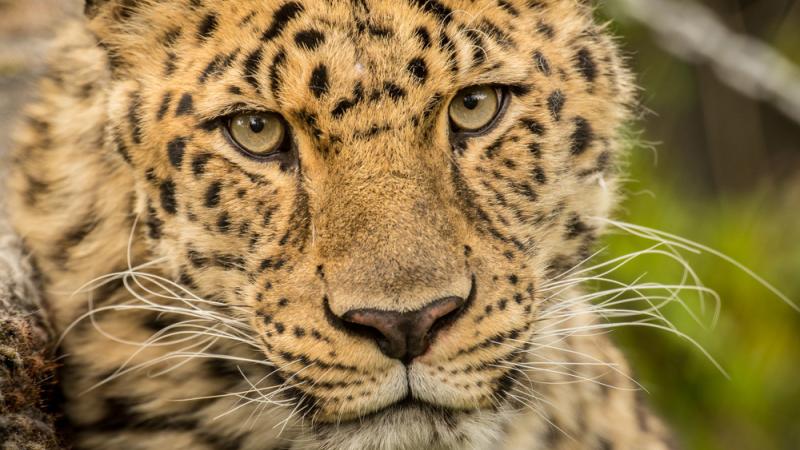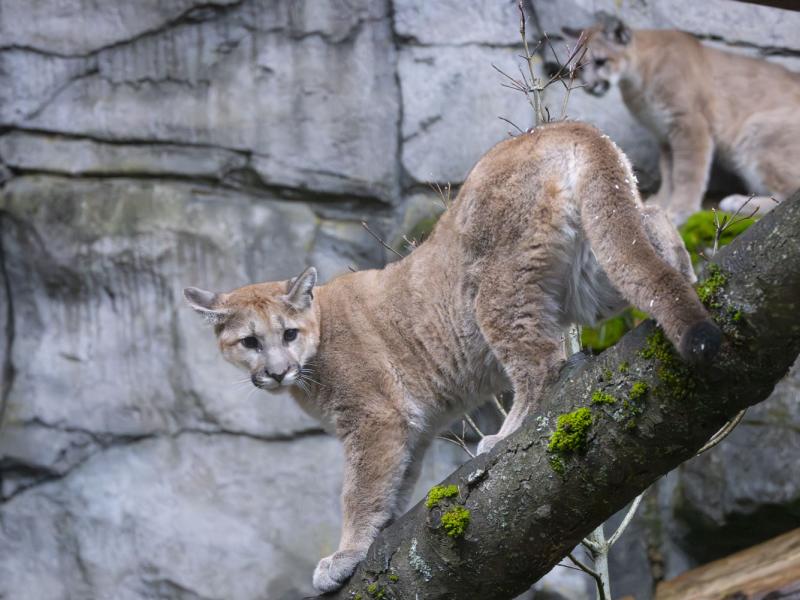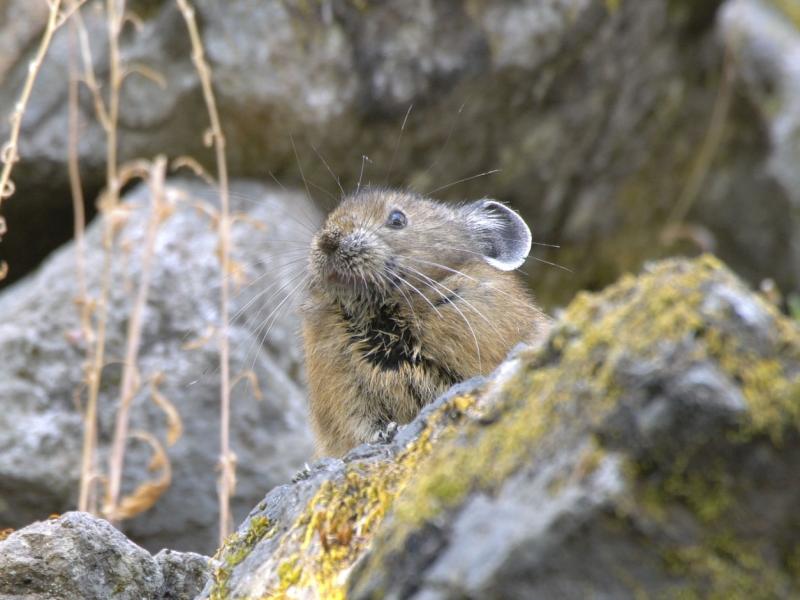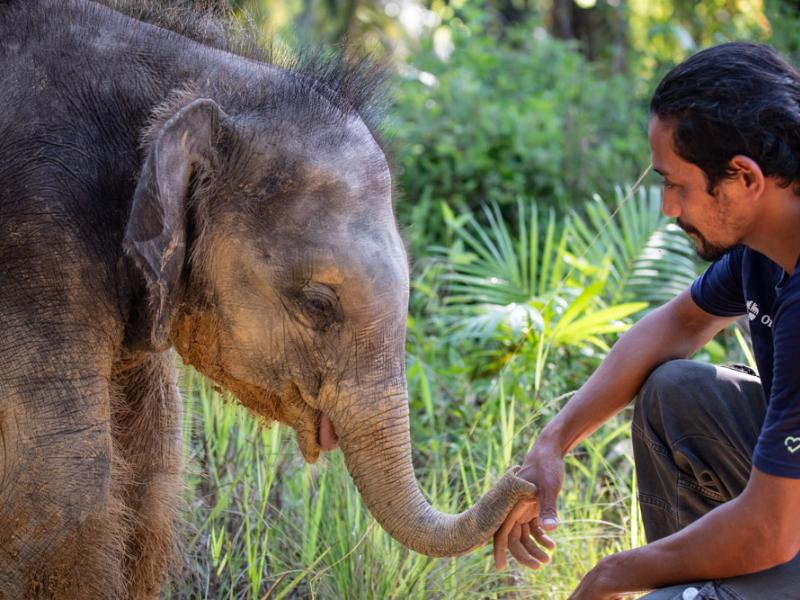Backscratcher helps old leopard with hard-to-reach spots

Zookeepers use a bamboo backscratcher to groom geriatric Amur leopard Borris
A leopard can't change his spots, but he can use some help reaching them every once in a while. When keepers at the Oregon Zoo noticed Borris, a geriatric Amur leopard, was having trouble grooming himself, they began using a backscratcher to assist with his daily routine.
"Borris is getting older, and he's not as flexible as he used to be," said Sara Morgan, one of the leopard's caregivers. "The backscratcher helps him with those hard-to-reach spots."
Keepers hold a bamboo backscratcher through the mesh door to Borris's habitat. The aging 120-pound leopard leans in, rubbing against the backscratcher and occasionally vocalizing his approval.
"He seems to really enjoy it," Morgan said. "And it helps him keep his fur nice and clean. To look at him, you'd never know he was such an elderly fellow."
At 19, Borris is one of the oldest known members of his extremely rare subspecies. He is the second-oldest Amur leopard in any facility accredited by the Association of Zoos and Aquariums — and one of the oldest anywhere on the planet.
"Wild Amur leopards live around 10 to 15 years, so Borris is considered quite elderly," said Amy Cutting, who oversees the zoo's Amur cat area. "But the Oregon Zoo is known for its specialized geriatric care. Our keepers work to make sure the animals have a great quality of life throughout their golden years. Borris's backscratcher is just another example of that."
Cutting notes that while Borris is doing well, his wild counterparts are at extreme risk of extinction, with fewer than 100 believed to remain in the wild.
This small population of Amur leopards is losing habitat from road-building and logging. They are hunted for their coats and for their bones, which are used in traditional Asian medicine. Decreasing numbers of native deer, their primary food, has forced them to hunt domesticated livestock, which leads to persecution by local farmers. With so few animals available to breed, genetic variation is dangerously low, and they are vulnerable to chance events, like epidemics or large wildfires.
Accredited zoos are participating in coordinated breeding programs to help preserve these critically endangered cats and add to their genetic diversity. Borris came to the Oregon Zoo in 2011 as part of the Species Survival Plan for Amur leopards with the Association of Zoos and Aquariums.
More News

Rescued cougar cubs are venturing out
A pair of orphaned cougar cubs, rescued and brought to the zoo by Washington Department of Fish and Wildlife staff in November, have begun exploring their outdoor habitat.April 17, 2025

Zoo seeks pika watchers for summer season
The Oregon Zoo is recruiting volunteers for Cascades Pika Watch.April 15, 2025

Zoo convenes action for imperiled elephants
Sabah government representatives joined conservation NGOs, local communities, palm oil producers, and tourism operators this week in the fight to save the world’s smallest elephants from extinction.April 11, 2025

